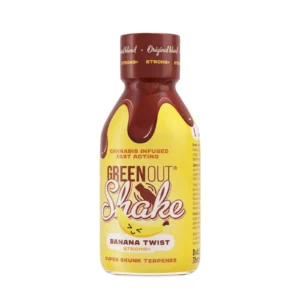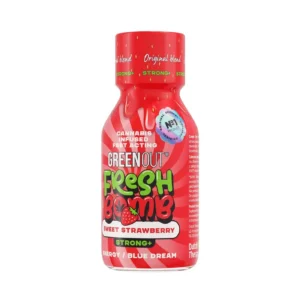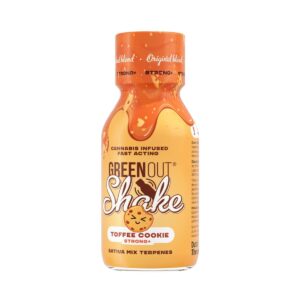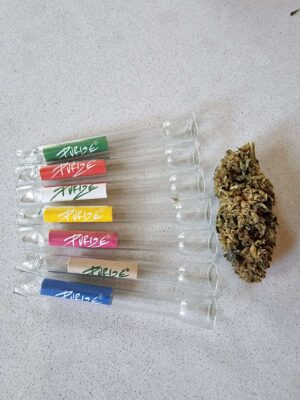The ambient effect, or the complementarity of the compounds contained in cannabis, is a frequently used argument for the use of full spectrum preparations. The benefits of this synergy are well described, the author of this concept being Raphael Mechoulam himself. Also worth noting is the particular combination of the cannabinoids CBD, CBG and THC, which is the subject of a growing number of studies. A selection are described below.
What is CBG?
CBG (cannabigerol) is one of hemp's cannabinoids; like CBD and THC, it is produced by plants in the Cannabis family and has the ability to bind to receptors of the endocannabinoid system in the human (and other mammalian) body. Although it was isolated as early as 1964, broader research on its properties only began a few years ago.
CBG - "mother of cannabinoids"
CBG in its acidic form, or CBGA, is the precursor to most of the cannabinoids. When the cannabis plant grows, CBGA branches into three main cannabinoids: CBDA, or cannabidiol acid, CBCA, or cannabichromenoic acid, and THCA, or tetrahydrocannabinolic acid.
Under the influence of temperature, the acidic forms of cannabinoids are transformed into the forms we are more familiar with, and it is this form that activates CB1 and CB2 receptors in our bodies. Therefore, CBG is sometimes referred to as the "mother of cannabinoids."
CBG itself is also a "full-fledged cannabinoid" that exhibits certain properties: to act as an analgesic and anti-inflammatory, balance hormones, and regulate appetite.
CBD, CBG, THC - the benefits of the combination
Studies show that when CBD is combined with THC, CBG and other cannabinoids, may provide more therapeutic benefits. This relationship is called the "ambient effect." The concept was presented by Professor Raphael Mechoulam. The researcher stated that cannabinoids work best when they are served together, then they complement each other and bring out the best in each other.
CBG can, for example, nullify side effects The psychoactive effects of THC, while enhancing its positive properties, such as antiemetic, anticonvulsant, anti-inflammatory and analgesic effects.
CBD, CBG and THC - how do they work on the body when administered together? Selected scientific studies.
Of particular note is CBD combination and CBG. Let's take a look at scientific studies that have focused on the potential use of these cannabinoids in various situations.
- According to the authors article published in 2023, there is an unmet need for analgesics that effectively relieve pain after a fracture. This demand, due to their mechanism of action and side effects, is not met by non-steroidal anti-inflammatory drugs (hinder healing - they inhibit the "needed" inflammation) and opioids (highly addictive).
Researchers examined the analgesic efficacy of two cannabinoids, CBD and CBG, in a mouse model of tibial fracture. Both CBD and CBG normalized pain sensitivity to all stimuli tested, and their analgesic effects were comparable to those of NSAIDs. At the same time, CBD and CBG promoted bone healing in all phases of healing. The data collected in the study suggest that CBD and CBG are therapeutic agents that can replace NSAIDs in the pain management post-traumatic.
- Researchers have shown, that higher concentrations of CBD and CGB in medical hemp droughts may increase the efficacy and tolerance of THC in male and female patients who respond less well to treatment with preparations containing the psychoactive cannabinoid.
- According to research, CBD and CBG have the ability to prevent abnormal cell growth and proliferation that takes place in cancer. Although further research is needed, the results of existing studies are promising.
- Other studies have shown that both CBD and CBG have antispasmodic properties, meaning they can help alleviate or eliminate epileptic seizures.
- Capability Hemp for pain relief is well understood, as are many side effects, including drowsiness. In one research analyzed the ability of THC and CBD and CBG, used individually and in combination, to block pain responses. The cannabinoids were tested on sensory neurons (tissue cultures) grown in the laboratory that respond to pain stimuli, such as the compound responsible for the spiciness of chili peppers - capsaicin.
THC has been shown to, CBG and CBD used individually were able to block capsaicin responses in sensory neurons, but THC, CBD and CBG combined in a 1:1:1 ratio were more effective. This combination has also increased the effectiveness of THC at a lower dose, so it may be possible to reduce the concentration of the psychoactive cannabinoid in the medical dry. The results of this study pave the way for clinical trials to develop more effective hemp-based painkillers.
We encourage you to read the article, in which we describe new research findings on CBD's mechanism of action in inflammation.








